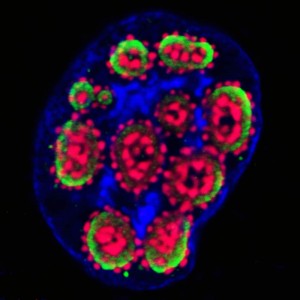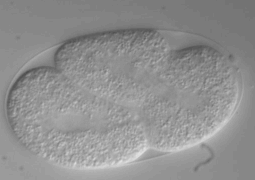Summary
Monitoring cellular responses to changes in growth conditions and perturbation of targeted pathways is integral to the investigation of biological processes. However, manipulating cells and their environment during live-cell-imaging experiments still represents a major challenge. While the coupling of microfluidics with microscopy has emerged as a powerful solution to this problem, this approach remains severely underexploited. Indeed, most microdevices rely on the polymer polydimethylsiloxane (PDMS), which strongly absorbs a variety of molecules commonly used in cell biology. This effect of the microsystems on the cellular environment hampers our capacity to accurately modulate the composition of the medium and the concentration of specific compounds within the microchips, with implications for the reliability of these experiments. To overcome this critical issue, we developed new PDMS-free microdevices dedicated to live-cell imaging that show no interference with small molecules. They also integrate a module for maintaining precise sample temperature both above and below ambient as well as for rapid temperature shifts. Importantly, changes in medium composition and temperature can be efficiently achieved within the chips while recording cell behaviour by microscopy. Compatible with different model systems, our platforms provide a versatile solution for the dynamic regulation of the cellular environment during live-cell imaging.
Ultra fast temperature shift device for in vitro experiments under microscopy
References
Tong Chen, Blanca Gomez-Escoda, Javier Munoz-Garcia1, Julien Babic, Laurent Griscom , Pei-Yun Jenny Wu and Damien Coudreuse. Open Biology 2016
FAQ
A problem with many microdevices is their reliance on the polymer polydimethylsiloxane (PDMS). This material is noted to absorb many types of molecules used in cell biology. This absorption from the microsystems creates a difficulty. The capacity to correctly modulate the medium’s composition is affected. It also affects the ability to control the concentration of specific compounds inside the microchips. This interference has consequences for the dependability of these experiments. The observation of cellular responses to changes in growth conditions is part of studying cellular functions. The manipulation of cells and their environment during observation remains a significant difficulty.
New microdevices for cell observation were developed to address the described problem. These new systems are PDMS-free. This design means they do not interact with small molecules. The problem with PDMS-based systems is that they are known to absorb compounds used in cell biology. This absorption reduces the ability to correctly change the medium’s composition. It also affects controlling the concentration of substances inside the microchips. The dependability of experiments is therefore affected. The new PDMS-free systems were created to solve this difficulty. They are intended for use during the observation of living cells. These systems provide a different way to manage the cellular surroundings.
The new devices, which are made without PDMS, include a specific function for temperature management. This function is designed to maintain a set sample temperature. This control can be set both above and below the surrounding ambient temperature. In addition to maintaining a set temperature, the function allows for quick temperature shifts. This capability is part of the new design. These systems were created to allow for the manipulation of cells and their surroundings during microscopic observation. The ability to make fast changes to temperature is a part of this. The devices are meant to be used for observing living cells. The temperature control is combined with the PDMS-free construction, which does not interact with small molecules.
The new PDMS-free systems are designed to allow changes in medium composition. They also permit changes in temperature. These alterations can be effectively made inside the microchips. This is done while cell activity is under observation by microscopy. The manipulation of cells and their surroundings during observation experiments is a known difficulty. These systems can also be used with different model systems. They are presented as a flexible option for managing the cellular environment. The design avoids the absorption of small molecules, which is a problem with PDMS. This allows for more dependable modulation of medium contents and compound concentrations.




